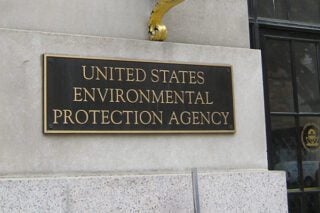The Environmental Protection Agency (EPA) recently awarded the Montana Department of Environmental Quality (DEQ) with $1.7 million for ongoing work at the Libby Asbestos Superfund Site.
“These monies are used by DEQ to participate in the Superfund process with EPA in all aspects of the Libby Asbestos cleanup,” said Libby Site Department Manager Lisa Dewitt. This funding is different from the Lincoln County and EPA agreement that supports the county’s Asbestos Resource Program.
The legacy of Libby is an environmental and health tragedy. It’s well-known W.R. Grace Company illegally dumped industrial waste containing large amounts of asbestos at several of their facilities in Libby.
The vermiculite contained in the industrial waste is a naturally occurring mineral used in the production of insulating materials. The vermiculite ore also contained tremolite asbestos, which is extremely toxic.
During the mine’s 70 years of operation, the ore was shipped to more than 50 processing plants throughout North America. Much of the Libby vermiculite was used to produce Zonolite attic insulation, but was also used in surfacing materials, window glazing compounds, waterproofing compounds, cements, adhesives, and plaster.
As a result, the small town of Libby, Montana is arguably “Ground Zero” in the war on asbestos. Nearly half the population has been diagnosed with asbestos disease. About 200 have died as a result of exposure to asbestos.
“The community of Libby deserves a clean environment and this [$1.7 million] grant will help achieve that,” said Sen. Steve Daines. “I applaud EPA for prioritizing the health of the people of Libby.”
The $1,672,106 covers the next two years as an amendment to a cooperative agreement grant already in place. According to Rep. Greg Gianforte and Daines this brings the total award to $9,706,508.
In addition, earlier this year, a $25 million settlement was reached between asbestos victims and the State of Montana. It will provide compensation to over 1,000 people who were exposed to asbestos by W.R. Grace and Co.’s mine and later diagnosed with asbestos-related diseases. This includes former employees of the mine as well as some of their family members.





